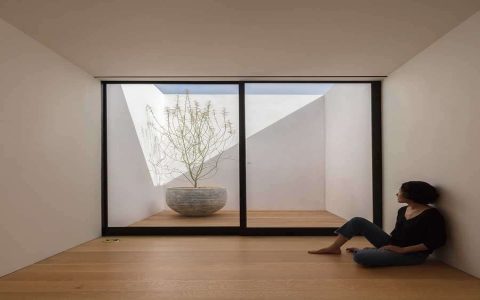Contemporary Japanese architecture garners global acclaim by merging tradition with avant-garde innovation, offering functional beauty and addressing modern challenges. Its popularity stems from distinct advantages and evolving trends.
Core Benefits Driving Global Appeal
- Harmony with Nature: Strong emphasis on integrating indoor/outdoor spaces. Generous use of natural light, ventilation, gardens, and locally sourced materials creates serene, biophilic environments that promote well-being.
- Refined Minimalism: Rooted in Zen and "Ma" (the concept of void/interval), designs prioritize simplicity, essential function, and exquisite craftsmanship. Clutter-free spaces foster calm and clarity.
- Material Innovation & Honesty: Mastery in using both traditional (wood, paper, bamboo) and modern materials (concrete, steel, glass). Structures often showcase material textures authentically and explore their limits, particularly innovative timber engineering for sustainability.
- Spatial Efficiency & Flexibility: Expertly addresses density and limited space (e.g., Tokyo's constraints). Clever multi-functional zones, movable partitions, and adaptable layouts maximize utility without sacrificing aesthetics.
- Enduring Craftsmanship: Deep respect for meticulous detailing and traditional joinery techniques, often reinterpreted with modern technology, ensures longevity and tactile quality.
Prevailing Trends Shaping the Movement
- Advanced Timber Engineering: Pioneering use of Cross-Laminated Timber (CLT) and laminated lumber. Enables larger spans, seismic resilience, and a significant push towards sustainable, carbon-sequestering construction replacing concrete and steel.
- Blurring Boundaries: Dissolving walls between interior and exterior through expansive glazing, terraces ("Engawa"), and spatial ambiguity. Creates fluid, interconnected living experiences.
- Socially Conscious Design: Focus on public spaces, community centers, and innovative small-scale housing solutions that enhance urban liveability and social interaction, particularly vital in dense cities.
- "Wabi-Sabi" Influence: Acceptance of imperfection, transience, and natural aging processes. Use of raw, unfinished materials, patinas, and designs that gracefully weather over time.
- Experimental Temporary Structures: Flourishing scene of conceptual pavilions and pop-ups (e.g., architectural biennales) allowing radical experimentation with form, material, and construction techniques without permanent commitment.
Contextual Sensitivity: Buildings increasingly respond to specific site conditions, history, and community needs rather than imposing abstract forms. Fosters a sense of place and belonging.
This enduring popularity is fueled by architecture that provides tangible benefits—spiritual calm, environmental responsiveness, spatial intelligence, and sustainable solutions—while continuously evolving through innovative trends grounded in a unique cultural philosophy.






